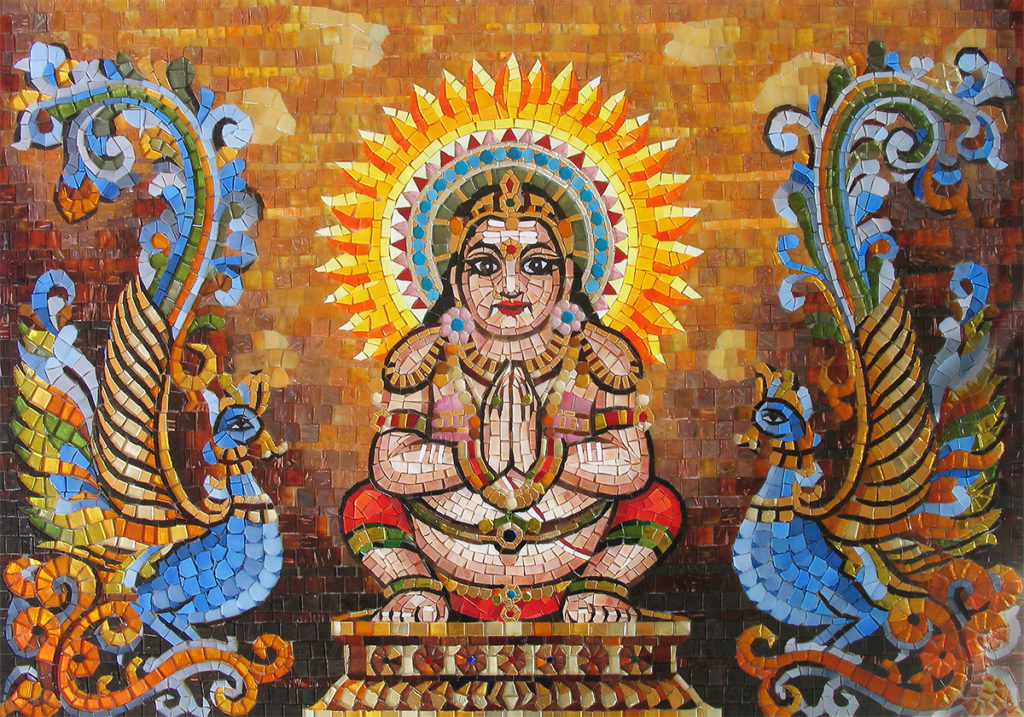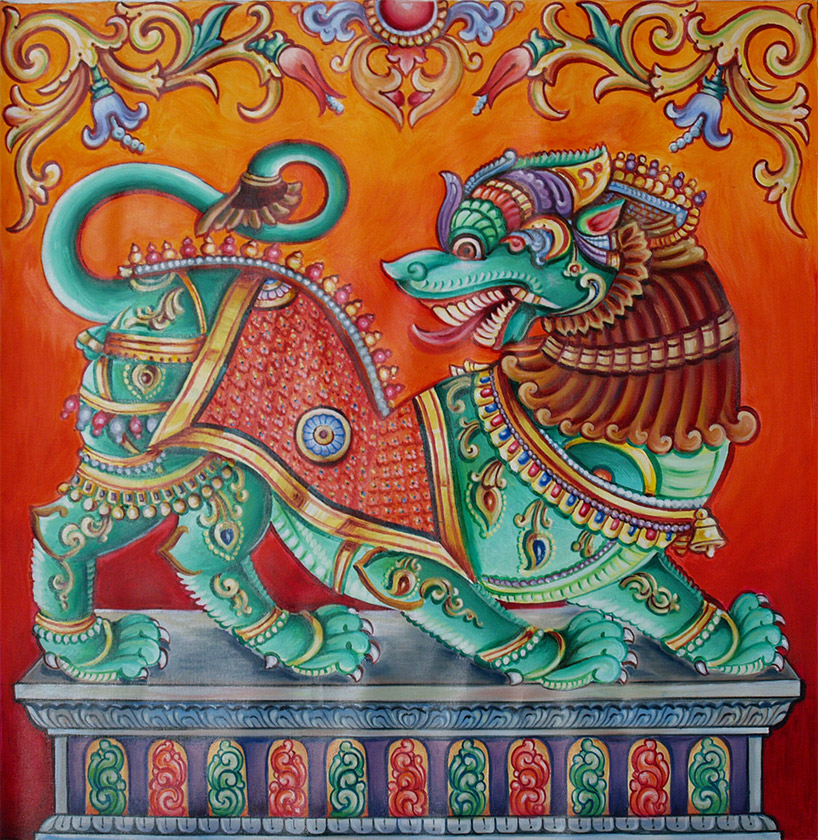Project: Sri Mariamman Temple
Location: Bangkok, Thailand
Date of construction: 1879
Total area: 2000sqm
Architect: SICIS Design Team
Products used: Mosaic
Date project started: 2016
Status: In progress

ABOUT
The Sri Mariamman Temple, located in the Bangrak district, in the vital center of Bangkok, is the largest Hindu shrine in the world outside India. Built in 1879 by Vaithi Padayatchi, a Tamil Hindu immigrant, it is also the oldest of all Thailand.
The façade has an incredibly varied style, with a riot of colors and images of deities in a multitude of shapes and sizes. At the entrance there is a gopura, a monumental tower 6 meters high, finely decorated. Inside the complex there are three sacred buildings dedicated to Ganesh, Kartik and in the main one to Sri Maha Mariamman, where the statues of the deities, divine figures of Hinduism, are located.
Il tempio di Sri Mariamman, situato nel distretto di Bangrak, nel centro vitale di Bangkok, è il più grande santuario induista al mondo al di fuori dell’India. Costruito nel 1879 da Vaithi Padayatchi da un immigrato Tamil Hindu, è anche il più antico di tutta la Thailandia.
La facciata ha uno stile incredibilmente variegato, con un tripudio di colori e immagini delle divinità in una moltitudine di forme e dimensioni. All’ingresso si trova una gopura, una torre monumentale alta 6 metri, interamente decorata. All’interno del complesso ci sono tre edifici sacri dedicati a Ganesh, Kartik e quello principale di Sri Maha Mariamman, in cui sono situate le statue delle deità, figure divine dell’induismo.
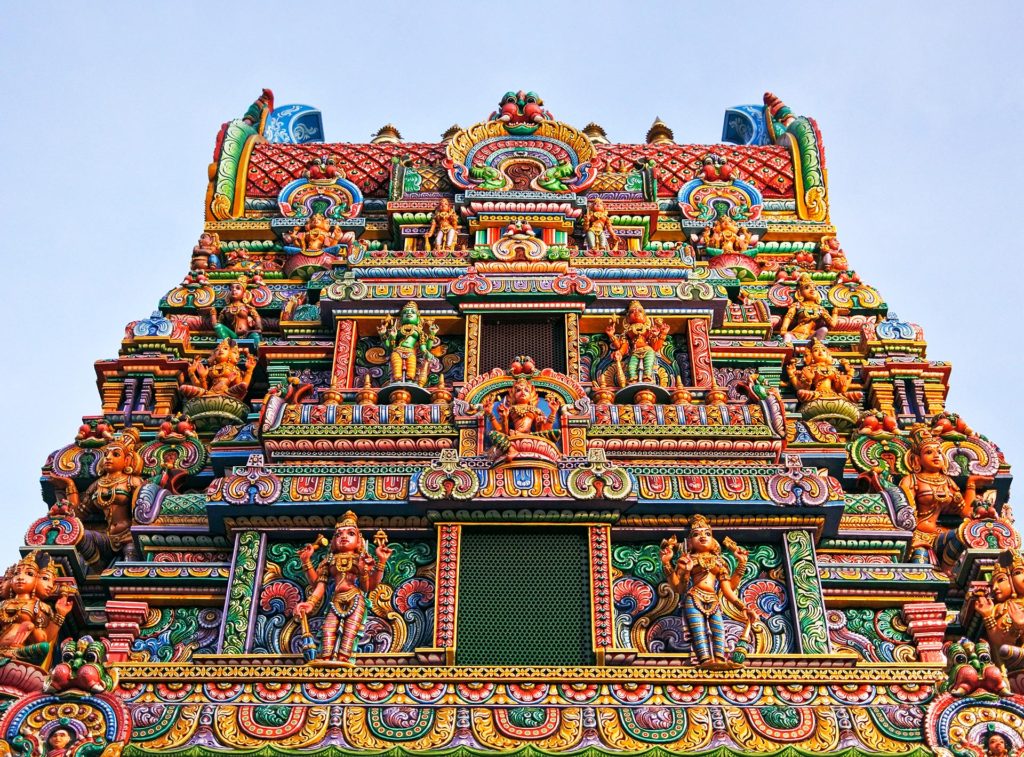
THE BIRTH OF THE PROJECT
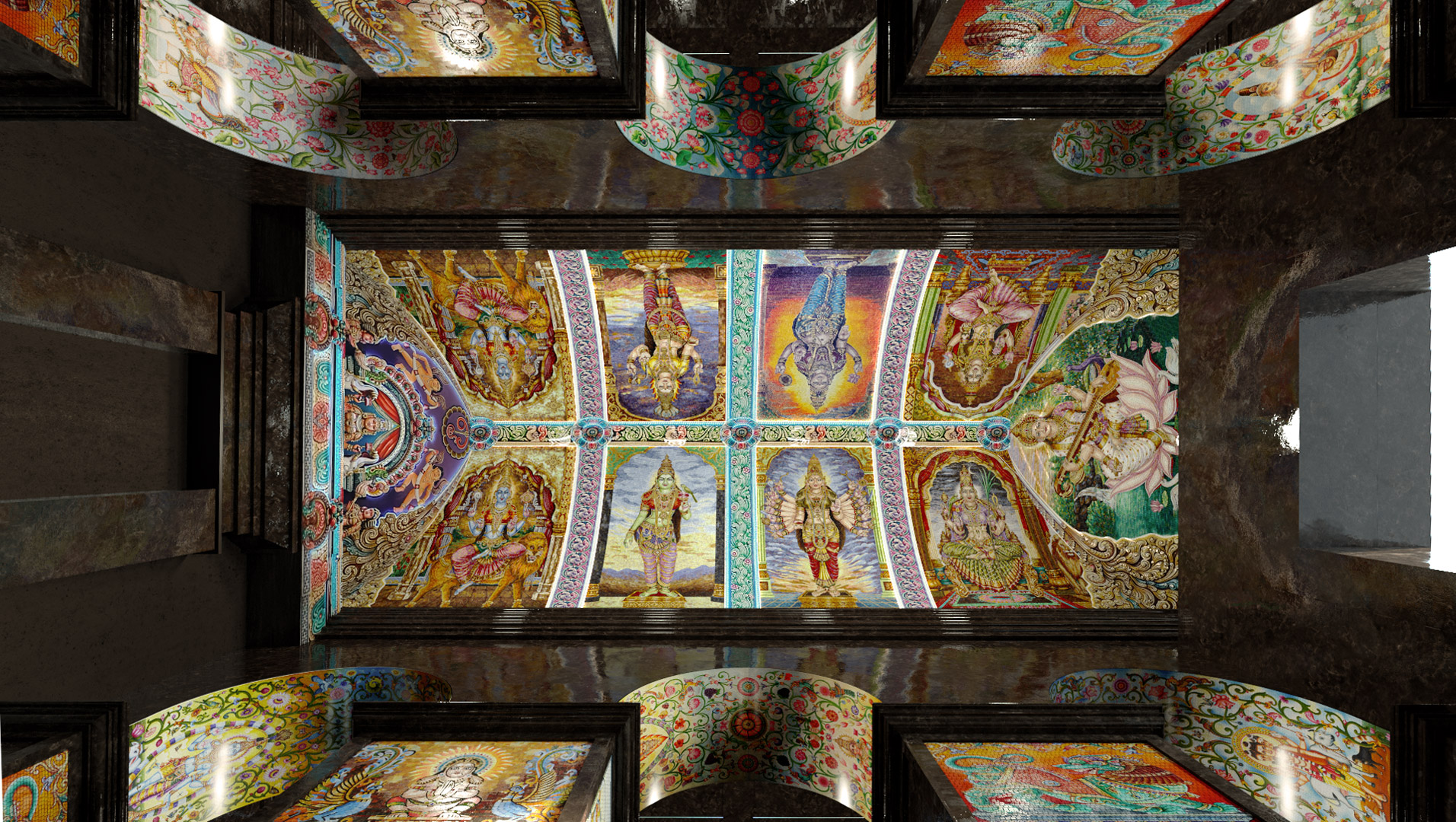
To ensure the survival of this place and its integral sacredness, the family that currently guards the temple took the important decision to replace all the traditional paintings with mosaic works. The mosaic is recognized as an ‘eternal painting’, which does not deteriorate and maintains the splendor of the colours and the vigor of the figures represented over time.
The delicate task was entrusted to SICIS which, using gold and Murano glass tesserae, skilfully elaborated these works through the technique of artistic mosaic. The internal artists of the committee in charge of the sanctuary painted the deities by hand and these were then sent to SICIS Ravenna laboratories. Here all the artworks have been recreated with the double indirect method (registered patent no. 0.000.222,556), created in 1989 by SICIS President and owner, Maurizio Placuzzi. With the evolution of the traditional technique of processing mosaic works, it’s possible to define all production phases in Ravenna laboratories, where there are a hundred artists specialized in mosaic art, and subsequently move them in their final places.
Each fresco was thus meticulously reconstructed, choosing the right tone for each brushstroke, for each detail. In particular for the incarnates, which are different and often representative of the divinity, the selection process of the tiles was crucial and in this the infinite palette of SICIS tiles was really of primary importance.
The mosaic masters thus recreated the images, paying maniacal attention to the expressions of the faces, the position of objects and symbols. In addition to the artistic mosaic, we find works in micromosaic and minute mosaics, which are extremely precious both for the creation of materials and for the technical preparation followed by art masters with special skills normally used for the production of fine portraits and jewelry.
Per garantire la sopravvivenza di questo luogo e la sua integrale sacralità, la famiglia che custodisce attualmente il tempio ha preso l’importante decisione di sostituire tutti i dipinti tradizionali presenti con delle opere musive. Il mosaico è riconosciuto come una ‘pittura eterna’, che non si deteriora e mantiene nel tempo lo splendore dei colori e il vigore delle figure rappresentate.
Il delicato compito è stato affidato a SICIS che, utilizzando tessere in oro e in vetro murano, attraverso la tecnica del mosaico artistico ha sapientemente elaborato questi lavori. Gli artisti interni del comitato alla custodia del santuario hanno dipinto a mano le deità che poi sono state spedite nei laboratori ravennati di SICIS. Qui tutte le opere sono state ricreate con il metodo doppio indiretto (brevetto registrato n. 0.000.222,556 mila), creato nel 1989 dal Presidente e titolare di SICIS, Maurizio Placuzzi. Con l’evoluzione della tecnica tradizionale di lavorazione delle opere musive, è possibile definire tutte le fasi di elaborazione nei laboratori di Ravenna, dove ci sono cento artisti che nel loro percorso professionale si sono specializzati proprio nell’arte musiva, e solo successivamente trasportarli nei luoghi dove troveranno la loro sede definitiva.
È stato quindi ricostruito minuziosamente ogni affresco, scegliendo per ogni pennellata, per ogni dettaglio il giusto tono. In particolare per gli incarnati, che sono differenti e spesso rappresentativi della divinità, il processo di selezione delle tessere è stato cruciale e in questo l’infinita palette delle tessere di SICIS è stata davvero di primaria importanza.
I maestri mosaicisti hanno così ricreato le immagini, prestando maniacale attenzione alle espressioni dei visi, la posizione degli oggetti e dei simboli. Oltre al mosaico artistico sono state realizzate anche opere in micromosaico e mosaico minuto, preziosissime sia per la creazione dei materiali che per la preparazione tecnica seguita da maestri d’arte con speciali competenze usate normalmente per la produzione di pregiati ritratti e gioielli.
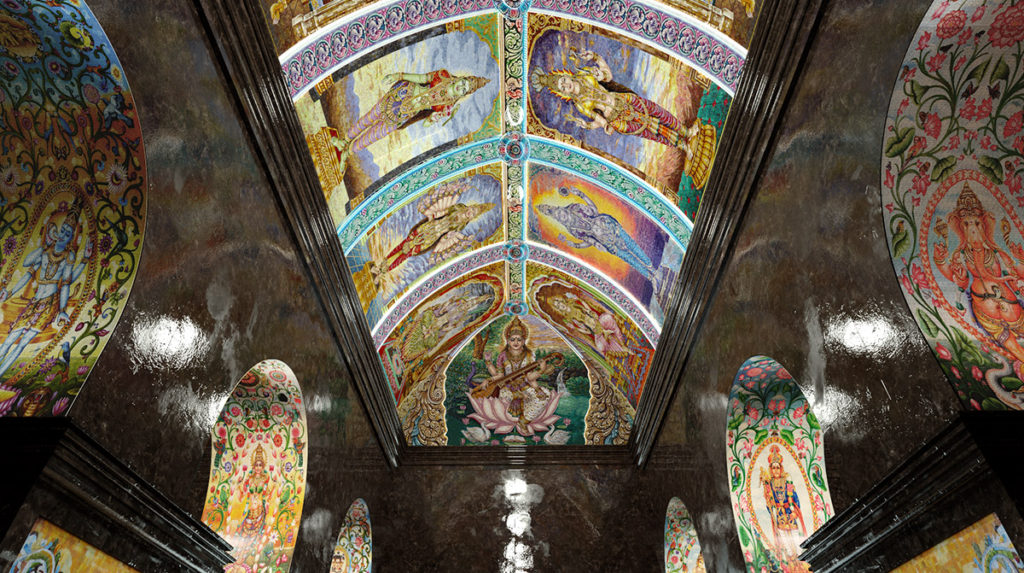
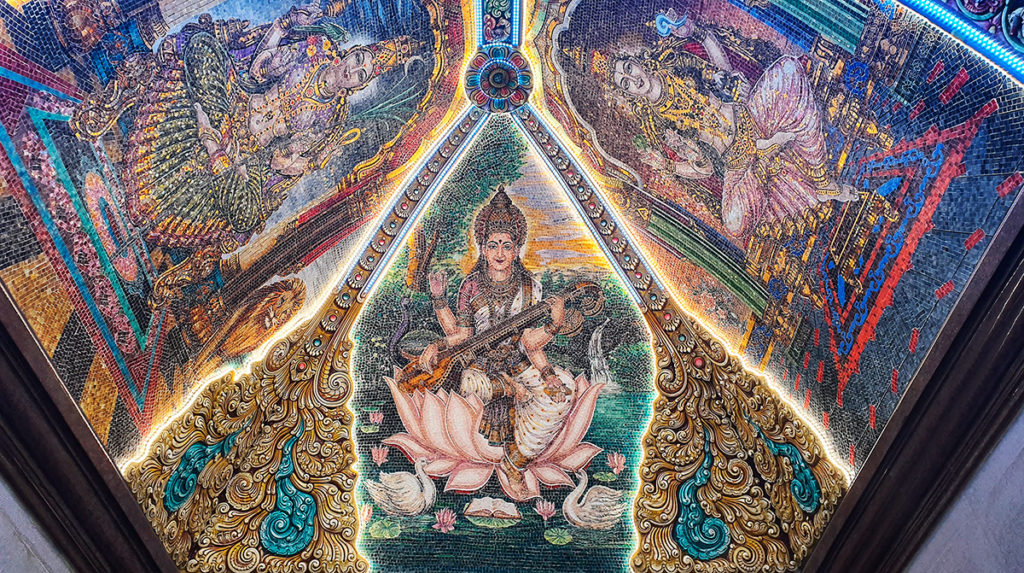
THE DEVELOPMENT

The project, due to its complexity and historical-artistic content, was divided into various phases. Initially, there were created the first two deities placed at the entrance to the temple: Sri Maha Mariamman and Shiva.
Il progetto, per la sua complessità e il contenuto storico artistico, è stato diviso in varie fasi. Inizialmente sono state compiute le prime due divinità poste all’ingresso del tempio, Sri Maha Mariamman e Shiva.
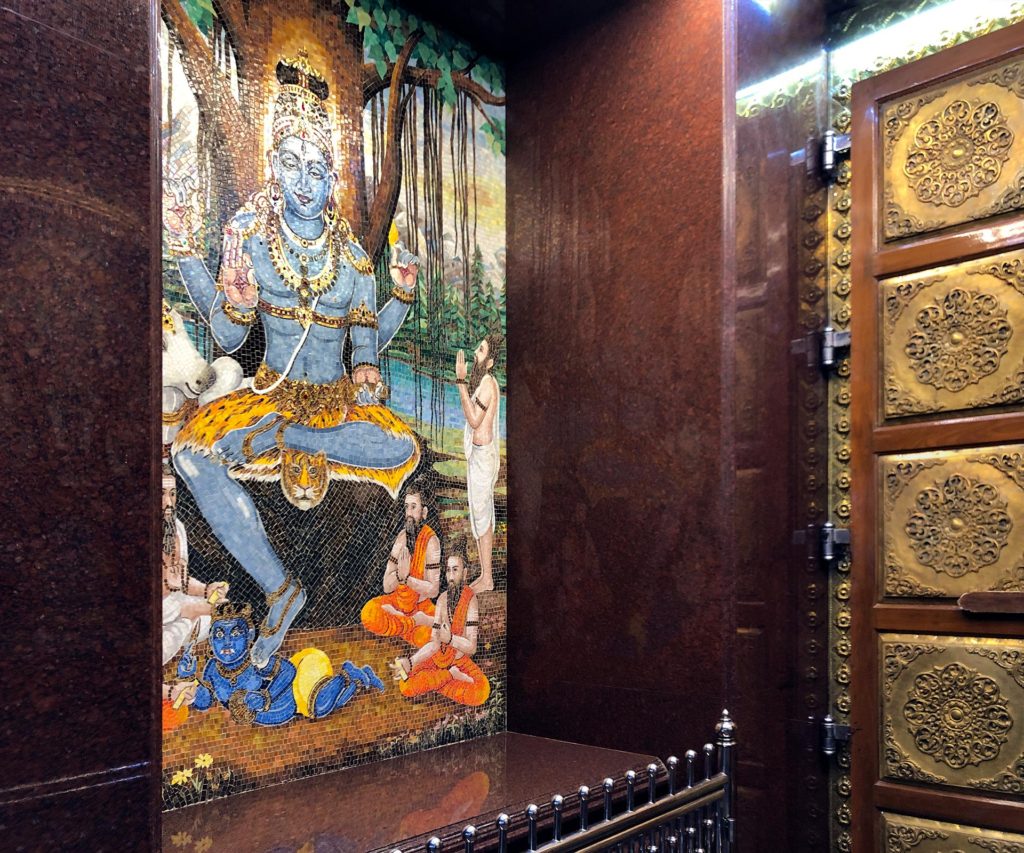
Subsequently the external walls of the main chapel and the independent temple were covered with gold and gold leaf mosaic. Here the sunlight shines on the golden tiles, generating a dazzling, almost enveloping effect.
Successivamente sono stati rivestiti di mosaico foglia oro e Gold i muri esterni della cappella principale e del tempietto indipendente. Qui la luce del sole risplende sulle tessere dorate generando un effetto abbagliante, quasi avvolgente.
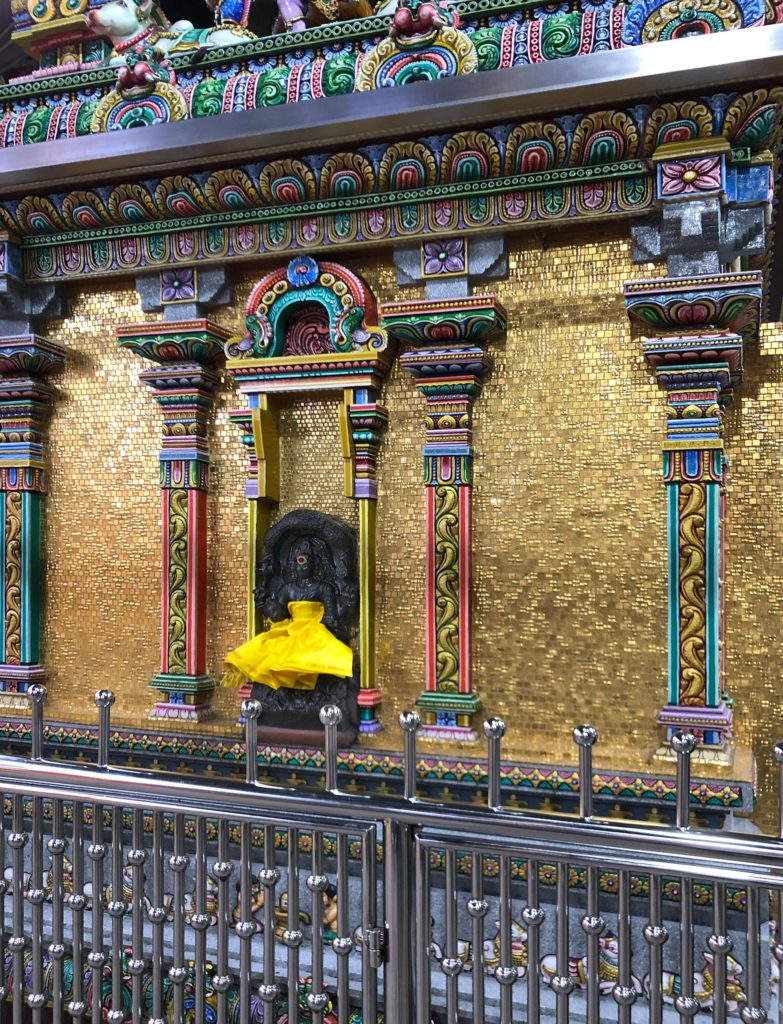
In the second phase, the nine Hindu deities were produced and installed, positioned in the vault of the central nave of the temple, the most spectacular part, in the niches and on two of the walls. This second phase has been the most prestigious to date and has seen the involvement of over 80 SICIS Lab mosaic masters, who have collaborated alongside the temple commission.
Nella seconda fase, sono state prodotte e portate in opera le nove deità hindu, posizionate nella volta della navata centrale del tempio, la parte più spettacolare, nelle nicchie e su due delle pareti. Questa seconda fase è stata ad oggi la più prestigiosa ed ha visto il coinvolgimento di oltre di 80 maestri mosaicisti SICIS Lab, i quali hanno collaborato a fianco con la commissione del tempio.
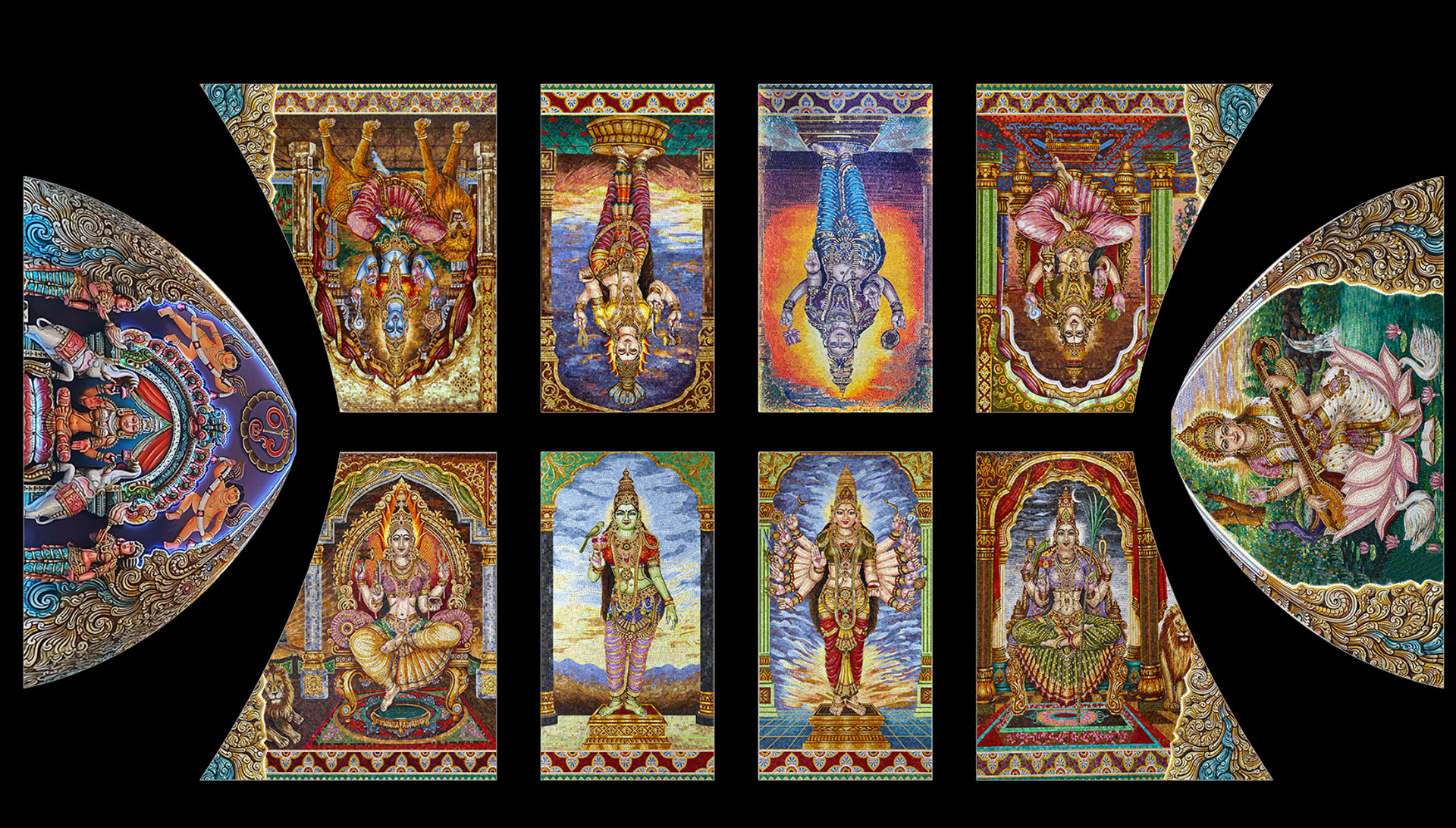
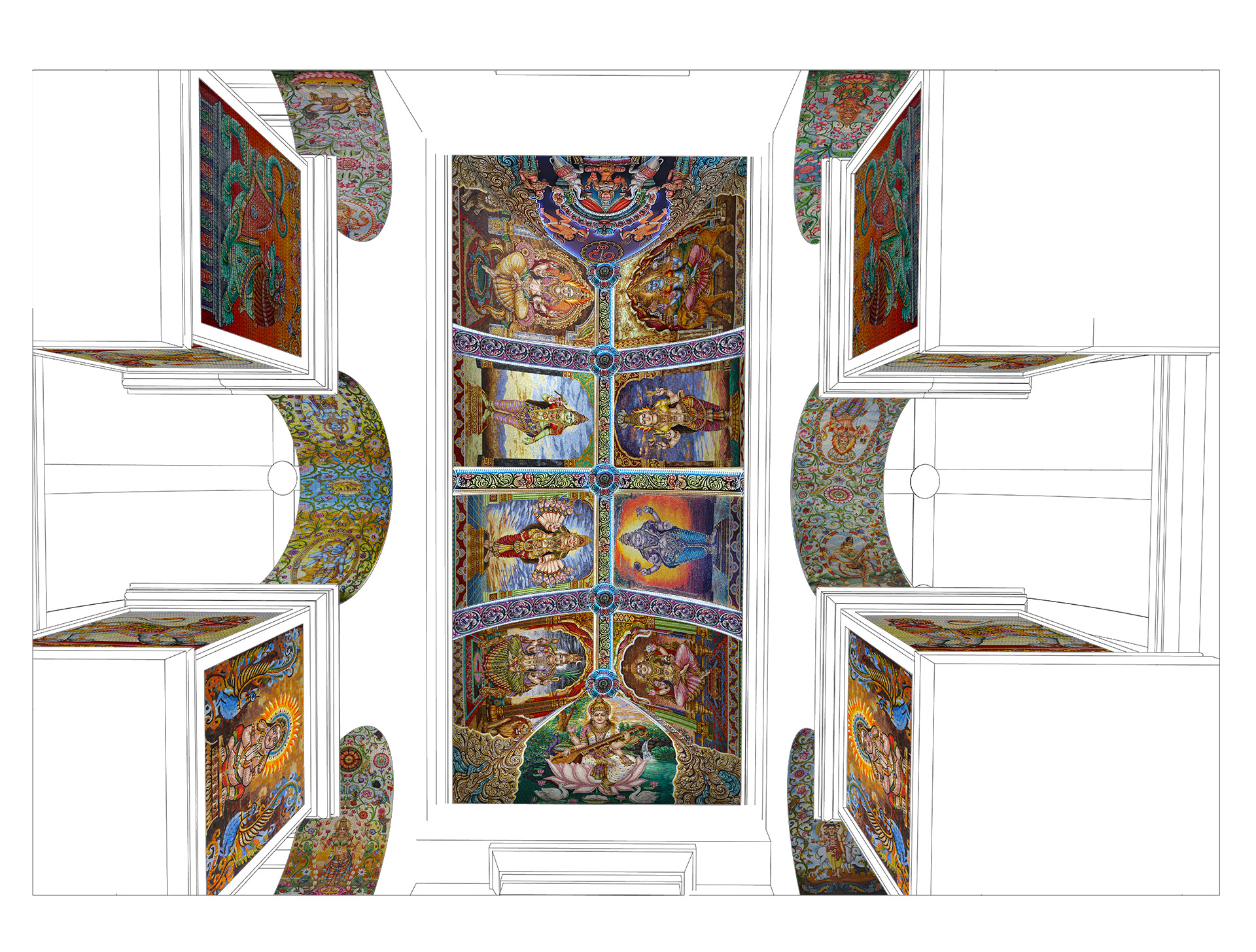
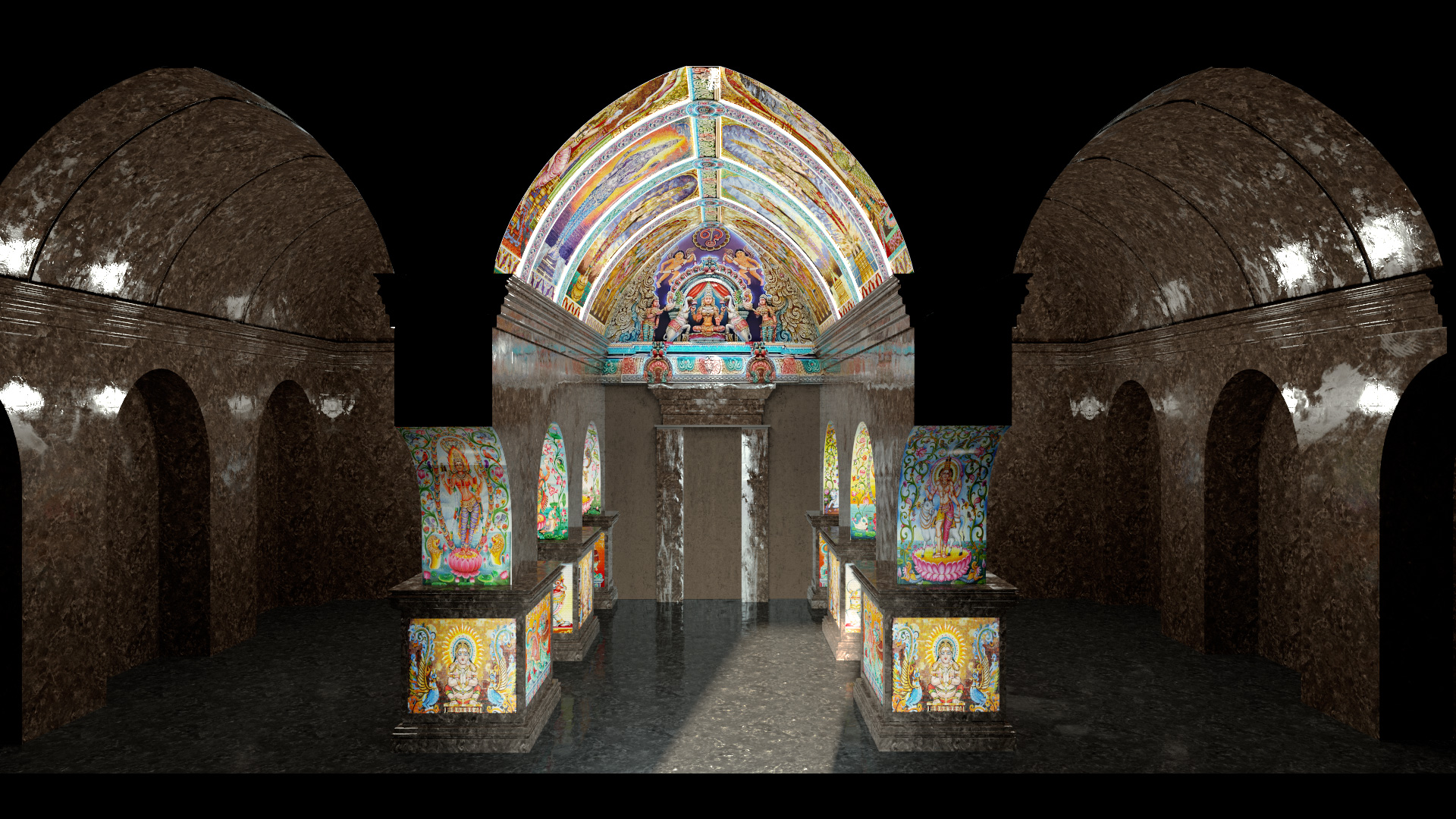
Up to now more than 6 million mosaic tiles have been used, an even more impressive number if we think that they have been masterfully worked one by one by the hands of those who selected, cut and elaborated the individual paintings.
Fino ad ora sono state utilizzate più di 6 milioni di tessere di mosaico, un numero ancora più impressionate se pensiamo che sono state magistralmente lavorate una ad una dalle mani di chi ha selezionato, tagliato e elaborato i singoli dipinti.
THE MOSAIC PANELS
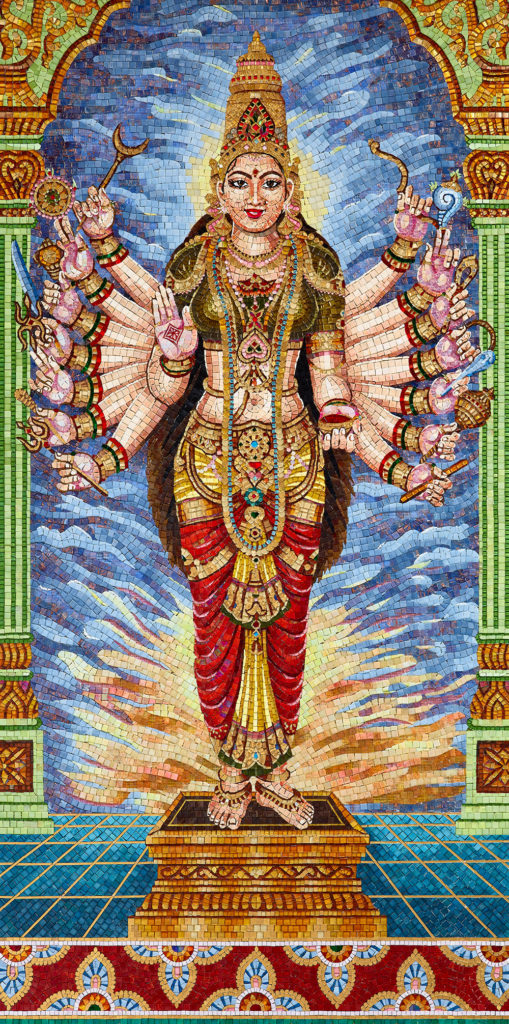
Durga 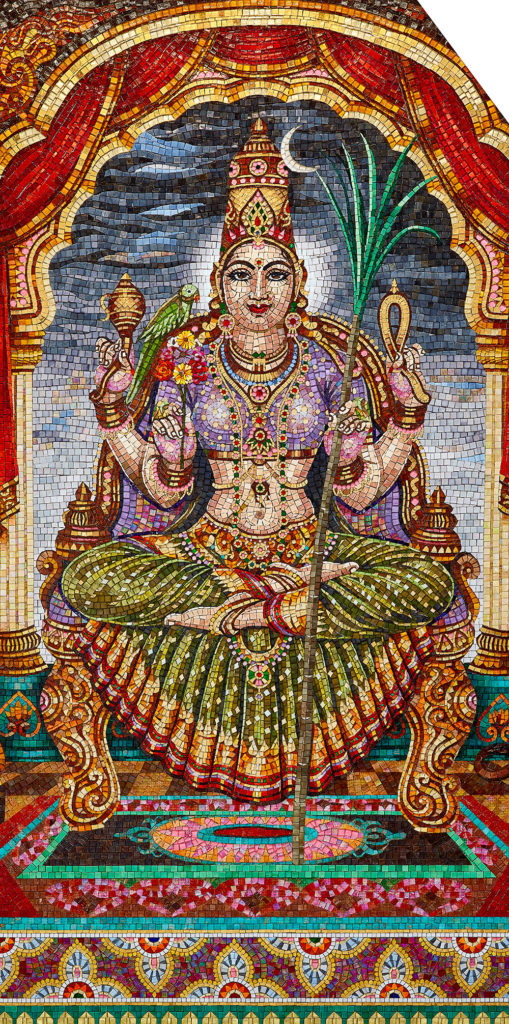
Kamakshi 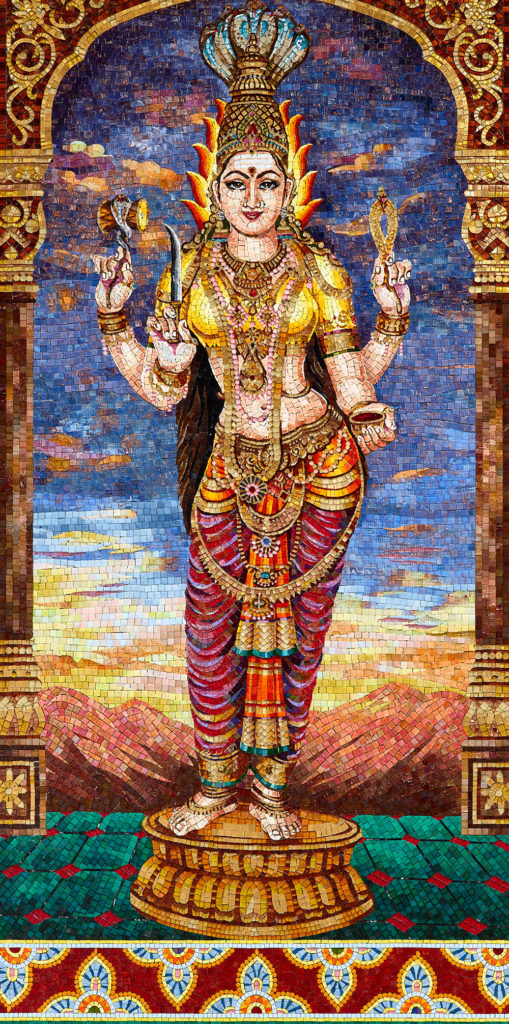
Karumariamman 
Lukshmi 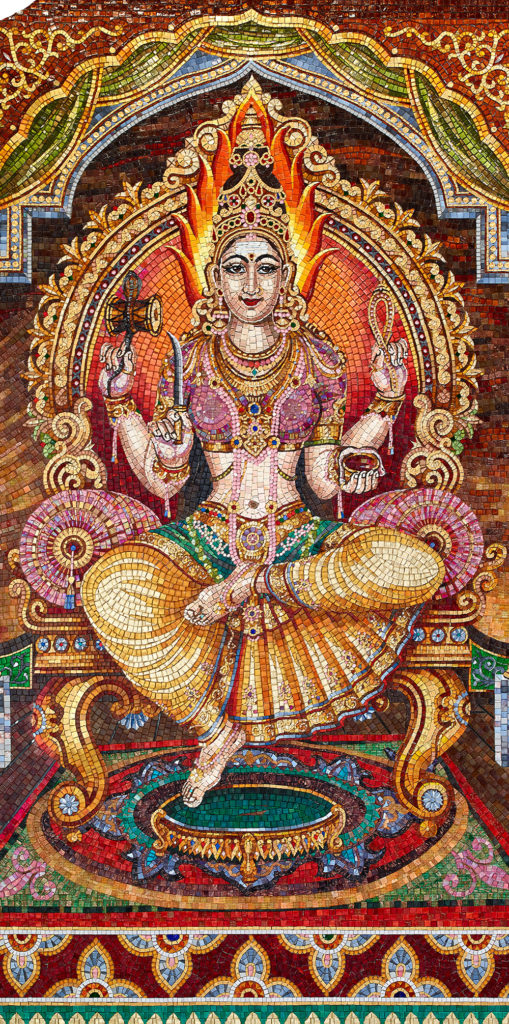
Mariamman 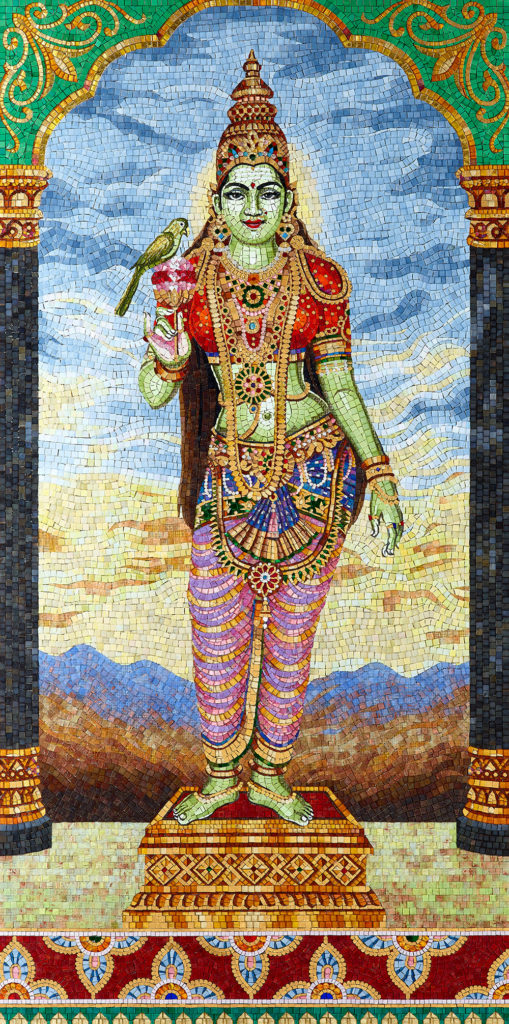
Meenakshi 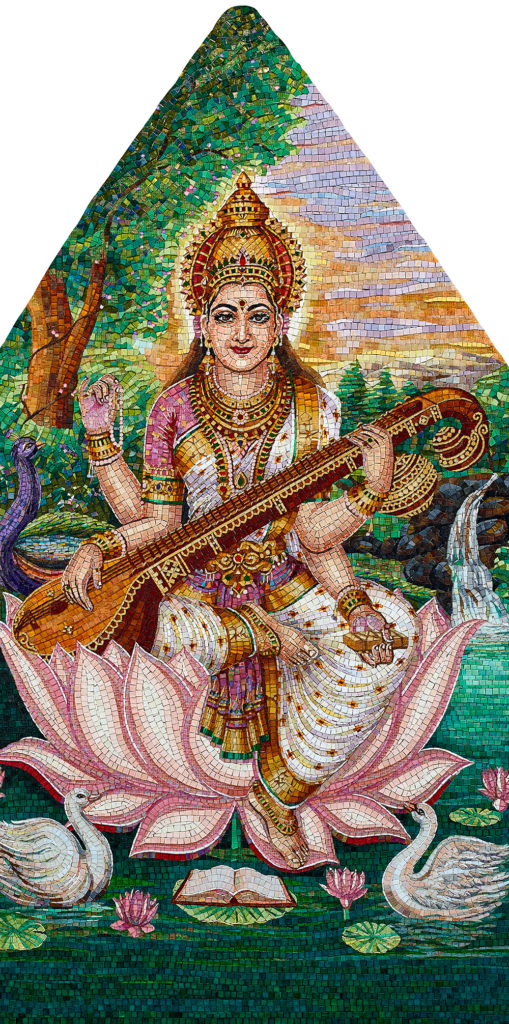
Saraswati 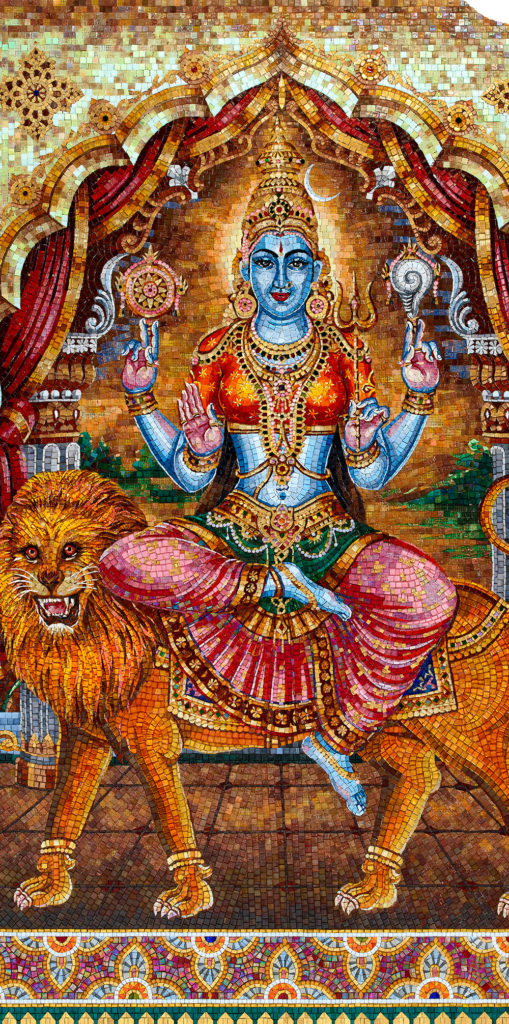
Vishnu Devi
THE FUTURE
The project provides for further developments that will continue for at least another two years due to its majesty, with the implementation of another twenty divinities that will be placed on the two side vaults of the temple. In addition, 12 micromosaics will be completed for the base of the main nave of the temple.
Il progetto prevede ulteriori sviluppi che proprio per la maestosità continueranno per almeno altri due anni, con l’implementazione di ulteriori venti divinità che verranno poste sulle due volte laterali del tempio. Saranno inoltre completati 12 pregiatissimi micromosaici per la base della navata principale del tempio.

